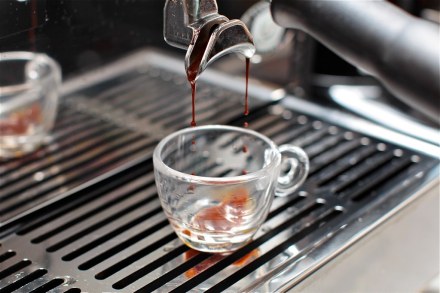The latest processing method of green coffee beans introduces red wine making skills
In the championship, contestants must prepare four espresso, four cappuccinos and four creative coffees within 15 minutes, while Sasa Sestic's creative coffee drew on red wine production skills and won the hearts of the judges.
Carbon dioxide soaking is a method of fermenting grapes in sealed containers filled with carbon dioxide. Sasa, winner of the 2015 WBC World Barista Competition, used this fermentation method to make coffee, adding Shiraz Vioni grape juice from Canberra's Clonakilla winery.
Sasa discovered a rare coffee variety, Sudan Rume, in La Nubes, Colombia, so together with coffee owner Camilo Mesizalde, they invented a new way to treat raw beans-washing carbon dioxide soaking, and the results were surprising!
Sudan Rume washing carbon dioxide soaking coffee beans-Sasa Sestic and Camilo Merizalde world premiere!
So, what exactly is washing carbon dioxide immersion? Next, Mr. Chen of Chongqing Brista Coffee training School will introduce the processing method of raw coffee beans to the students, the carbon dioxide soaking process.
The processing method of raw coffee beans the four elements of carbon dioxide soaking treatment:
1. Shade system
The shade system can effectively block the sun, so that the coffee pulp can produce more sugar, making the final coffee more sweet and wonderful and shiny sour.
2. Stainless steel container
As soon as the coffee beans are picked, they are put into stainless steel containers for fermentation, instead of using traditional cement or ceramic tile containers, these traditional containers will absorb the flavor of the coffee beans rather than retain more of the coffee flavor in the coffee pulp. The flavor of coffee can be made purer by using stainless steel containers.
3. Carbon dioxide
The container in which the coffee beans are placed is then sealed and pressurized with carbon dioxide so that there is no oxygen in the container. By doing so, it ensures that the flavor and aroma of all the coffee are retained in the coffee, and the flavor of the coffee is more obvious.
4. Controllable environment
Finally, these containers of coffee beans are placed in a controlled environment to ensure that coffee beans with the same flavor can be replicated with each treatment. However, the traditional treatment methods are affected by weather, humidity and other factors, so it is difficult to ensure that the flavor of beans treated each time is consistent.
Important Notice :
前街咖啡 FrontStreet Coffee has moved to new addredd:
FrontStreet Coffee Address: 315,Donghua East Road,GuangZhou
Tel:020 38364473
- Prev

Milk foam making and Coffee pattern drawing skills of Italian Coffee
Today, I will share with you how to make a beautiful and delicious cup of lace coffee. Preparation work the preparation work of making pull flower coffee is extremely important. You must ensure that the following points are foolproof: 1. Make sure the steam rod is clean; 2. Make sure the milk is fresh enough and the temperature is 4-7 ℃. The lower the temperature of the milk, the better, but don't freeze. Prepare a thermometer. milk
- Next

The fat of Espresso seems simple, but it is worth studying!
Many friends who are using coffee utensils other than Italian machines always struggle with the fact that their coffee is free of oil. Only coffee made by Italian machine has fat?! Why does the mocha pot have so little espresso oil?! What kind of grease can be regarded as the perfect Espressofan! If we want to talk about grease, let's look at it from these two aspects. First of all, let's take a look at a cup of black coffee except water.
Related
- What is the meaning of lactic acid fermentation with coffee bean treatment?
- How to judge the state of foam by sound?
- How does the latte pull out the unicorn pattern? Come to get for a little trick to improve the flower pull!
- Will flower pulling affect the taste of the latte?
- Do you know the history of coffee?
- The difference between honey treatment and sun washing what is raisin honey treatment?
- What kind of milk can a novice use to make coffee foam to keep the foam longer? The correct method and skills of milking tutorial sharing
- Why do washed coffee beans taste sour? Flavor characteristics of washed Coffee
- Introduction to the skill of how to practice the size and height of water injection around the circle of hand-brewed coffee
- How do beginners practice coffee flower drawing from scratch?

